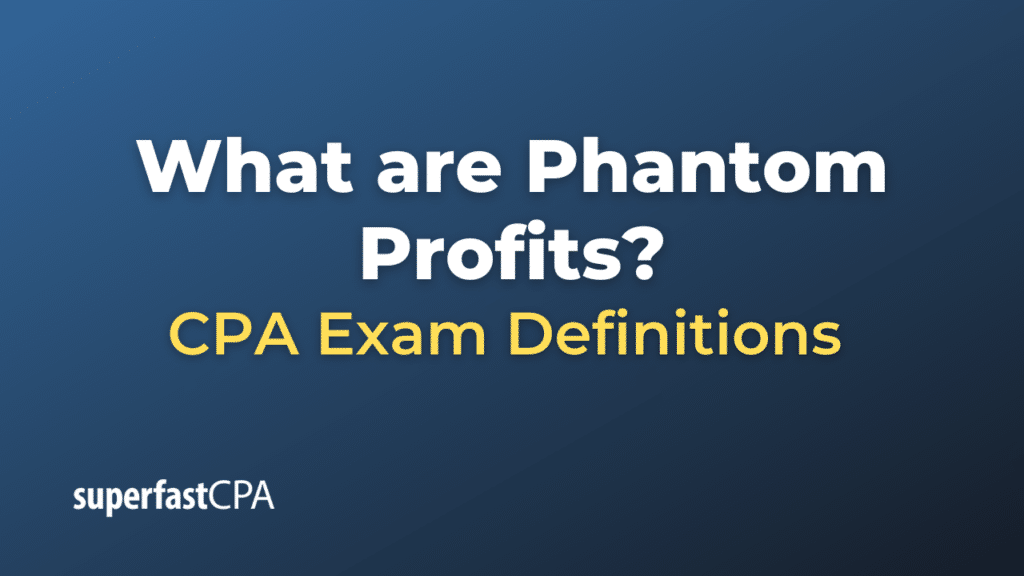Phantom Profits
Phantom profits refer to apparent gains that a company seems to have made but which are not actual or realized profits. These are usually the result of accounting practices or changes in market conditions rather than real economic gains. Phantom profits may look good on a company’s financial statements, but they don’t represent actual cash that the company has earned.
Here are a few scenarios where phantom profits might occur:
- Inventory Accounting: If a company uses the Last In, First Out (LIFO) method of inventory accounting during periods of inflation, it could show higher profits because the cost of goods sold (COGS) is based on the cost of the most recently purchased or produced goods, which is higher than the cost of the goods actually sold. These are phantom profits because they are the result of accounting rules rather than an actual increase in the company’s profitability.
- Unrealized Capital Gains: If a company’s assets appreciate in value, this could show up as a gain on the company’s financial statements even if the company hasn’t actually sold the assets. These are phantom profits because they are subject to change until the asset is sold and the gain is realized.
- Deferred Taxes: If a company uses different methods of depreciation for tax and financial reporting purposes, it could show lower expenses and higher profits on its financial statements than on its tax returns. The difference between the tax expense reported on the financial statements and the taxes actually paid is a deferred tax liability. The higher profits shown on the financial statements are phantom profits because they will be offset in future periods when the deferred taxes are paid.
Phantom profits can give a misleading picture of a company’s financial health, so it’s important for investors and other stakeholders to understand where they come from and to look at other indicators of financial performance as well.
Example of Phantom Profits
Let’s look at an example related to inventory accounting:
Suppose a company, Best Widgets Co., manufactures widgets. Due to increasing raw material costs, the cost to produce a widget has been steadily rising over the year:
- In January, it costs $10 to make a widget.
- In February, it costs $12 to make a widget.
- In March, it costs $15 to make a widget.
Best Widgets Co. uses the Last In, First Out (LIFO) method for inventory accounting. This means that when they sell a widget in March, they record the cost of goods sold (COGS) as $15, even if the widget they actually sold was one of the ones produced in January for $10.
Now suppose Best Widgets Co. sells a widget for $20 in March. According to their LIFO accounting, they will record a profit of $5 ($20 selling price – $15 COGS). But in reality, if they sold a widget that was manufactured in January, their actual profit is $10 ($20 selling price – $10 COGS). The difference of $5 is phantom profit—it appears on their financial statements, but it’s not money that they’ve actually earned.
This is a simplified example, but it shows how accounting methods can sometimes create the appearance of profit where there isn’t one. It’s important for anyone reading a company’s financial statements to understand these nuances.













